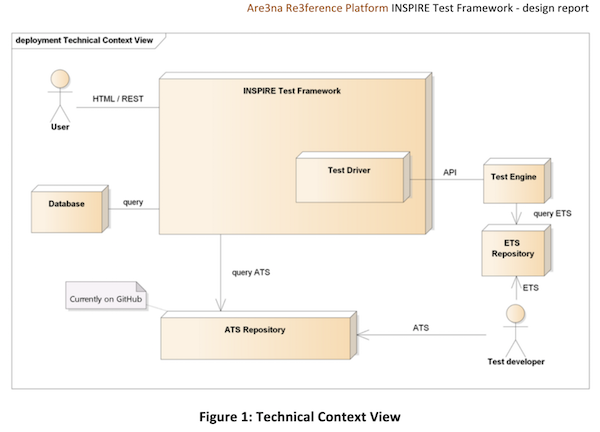Wow, the time really flies: it’s been over 1.5 years since my last post about the INSPIRE validation and conformance testing in December 2014! Since then the INSPIRE MIG subgroup MIWP-5 has worked hard to get the Abstract Test Suites for INSPIRE Network Services defined and the requirements listed for the commonly agreed INSPIRE validator reference implementation. In the August 2016 the first fruits of this work will be ready for picking as the first release of the INSPIRE Test Framework open source project is scheduled to released.

INSPIRE validation workshop
I recently attended to a validation workshop of the INSPIRE Knowledge Exchange Network (INSPIRE KEN) in IGN’s school of Geomatics (ENSG), Marne-la-Vallee, France. The idea of the workshop was to bring together people working with the INSPIRE specifications, validation tools and data providers, and to share experiences and ideas about INSPIRE metadata, data and service validation. The workshop was a success with more than 60 participants from 38 organisations in 17 European countries. If you missed the workshop, the slides and videos of the 28 presentations are available at the workshop website, including my presentation about Spatineo tools (video of the presentation in YouTube).
Test Framework for consistent INSPIRE validation
One of the most interesting topics was the status and plans of the INSPIRE Test Framework project. The main goal of this project is to create an open source reference application to verify the compliance of the tested objects against the requirements of the INSPIRE Technical Guidance documents. This work is part of the JRC ARE3NA project and continues until mid 2017. PwC and Interactive Instruments have been contracted to plan and run this software project, which makes me pretty confident about the results.
The main outcome of this work is a reusable, open source software package capable of executing reference implementations of the validation tests for INSPIRE metadata, datasets and services. This software will be hosted by the JRC as a web application, but it will also be possible to install it locally and to integrate the tests in the internal data provision workflows. The project will also define solid data models for the validation testing concepts, enabling persistent test data storage and remote execution and test data exchange using APIs. Needless to say this sounds very promising: A common, well-governed test codebase and a solid software framework is a key in helping the INSPIRE data and service providers to reach the interoperability goals of INSPIRE with considerably less effort.

The initial design of the Test Framework as presented by Clemens Portele of Interactive Instruments at the workshop assumes that the existing ETF tool will be used as the base of the test framework including service testing capabilities using SoapUI and large XML file validation leveraging BaseX. Some of the key extensions for ELF include a properly documented and comprehensive API, multilingual test reports, and test driver for TeamEngine enabling reuse of the existing CITE conformance tests for the OGC standards.
At Spatineo we have been actively involved with the INSPIRE validation work as members of the MIWP-5 group from the beginning. We are very excited to start integrating the Test Framework into Spatineo Monitor to complement our INSPIRE Network Service testing capabilities, which already cover the availability, performance and capacity testing as well as service metadata validation for WMS and WMTS services. I also encourage everyone interesting in this work to take a look at the Design Report of the INSPIRE Test Framework v0.3 containing the initial design and commenting to the authors of something does not look right.

Validate early, provide user-friendly results
At the end of the INSPIRE KEN workshop, Michael Lutz from JRC emphasised the importance of using the validation tools already quite early in the work data provision and service publishing processes: If the validation is only done as the final acceptance test step, this probably results in both extended initial release time and double work as the found errors need to fixed. Other concluding point was the importance of the usability of the validation results: clear error messages, and instructions on how to fixed the particular errors.
No matter how good the INSPIRE validation tools are, using them is not enough to create a successful European Spatial Data Infrastructure. The strength of a good validation tool is guiding the data and service providers to avoid decisions endangering interoperability, and doing that as early as possible in order to save time for more important things.

